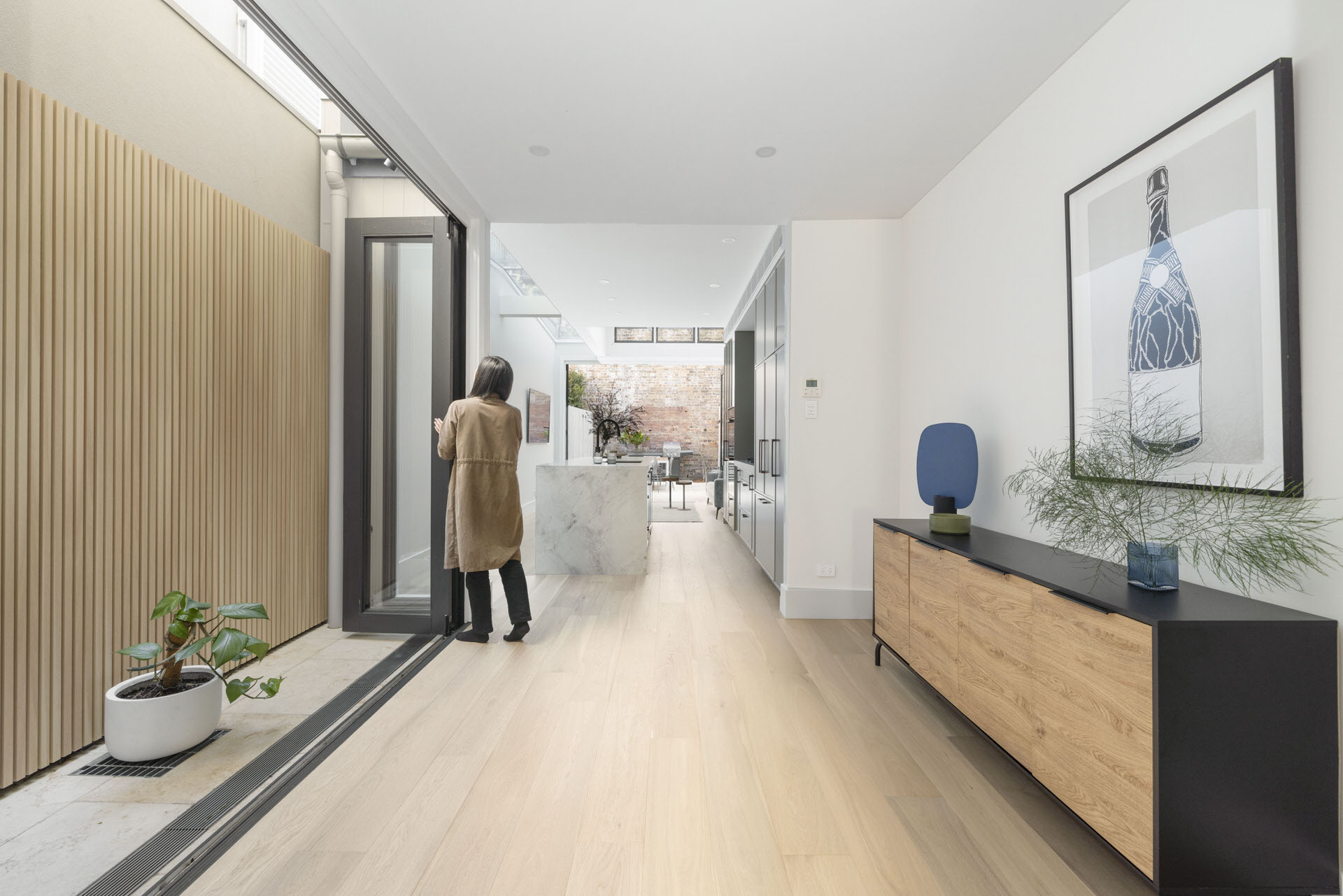
What’s IN and What’s OUT for 2025 Homes –
Are You Making These Outdated Design Choices?
Design trends come and go – but when you’re creating a home built to last, the goal is never to be trendy. It’s to be considered.
At TASS, we design homes that are built to evolve – crafted with the people who live in them, their surroundings, and their stories in mind. But that doesn’t mean ignoring what’s changing in the world of residential design. In fact, understanding what’s on its way out can help guide smarter, more enduring decisions.
Here’s our take on what to embrace – and what to leave behind – as we head into 2025.
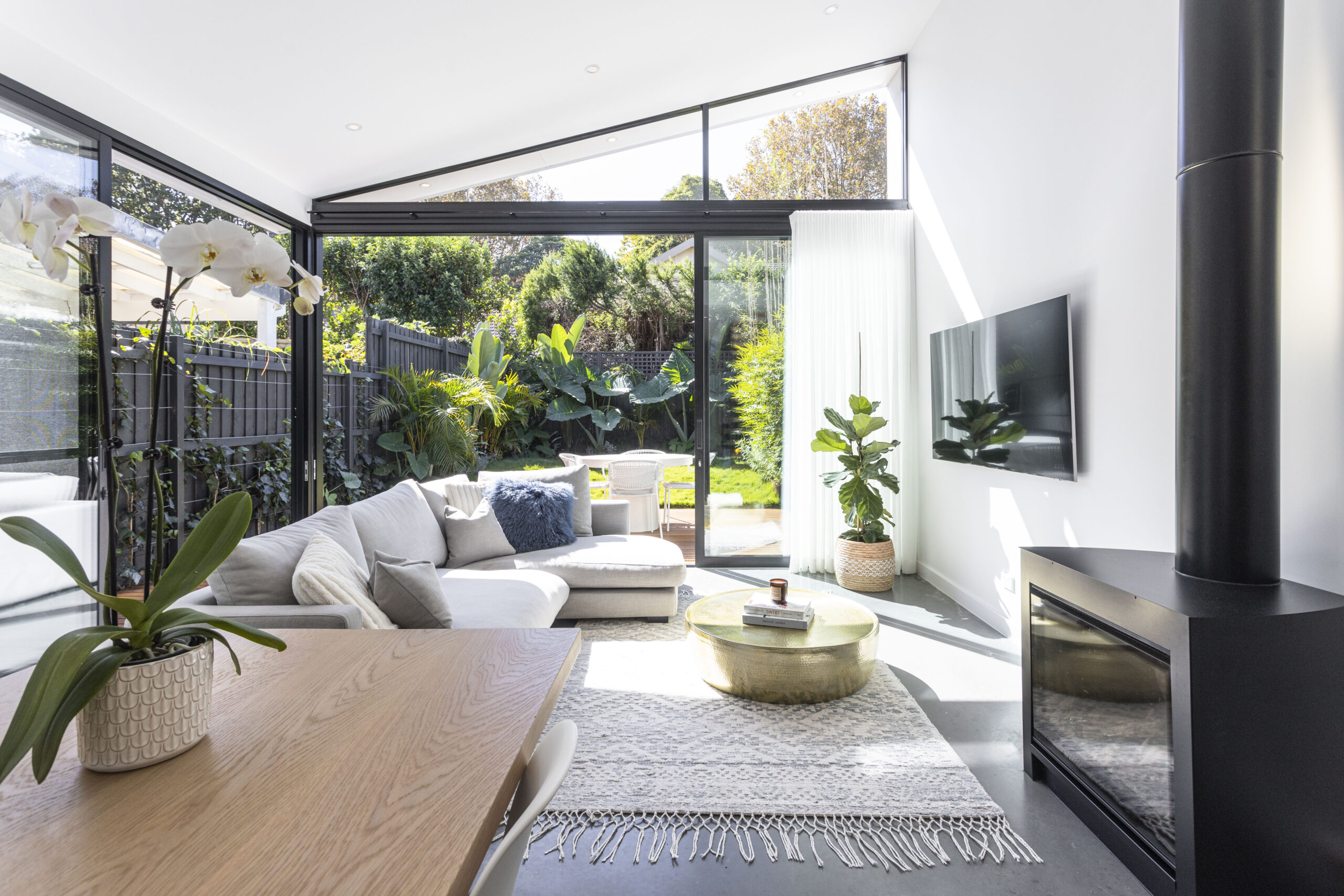
IN: Zoned, Purpose-Driven Layouts
OUT: Overly Open Plans
Open-plan living once defined contemporary home design. But the past few years have prompted a shift. With more people working from home and seeking separation within shared living environments, clients are now craving distinct zones that still feel connected.
Instead, consider layered floorplans that offer flow and flexibility. Think quiet breakouts, integrated study areas, and semi-open transitions between key living zones.
In one of our recent Mosman projects, large, light-filled spaces are carefully zoned to support both connection and retreat – allowing for separate family zones without sacrificing cohesion.
According to the James Hardie Modern Homes Forecast 2025, Australian homebuyers are turning away from unstructured open layouts in favour of rooms with clearly defined purpose and use.
IN: Raw, Textural Materials
OUT: Glossy, High-Shine Finishes
High-gloss finishes are giving way to materials that offer tactile richness and natural authenticity. In 2025, there’s a notable shift towards embracing raw, untreated materials that add depth and warmth to interiors.
Instead, consdier brushed brass, matte finishes, tactile stone, hand-glazed tiles, lime render, and natural timber.
Our Scarborough project exemplifies this trend, featuring a muted, earthy palette with stone and timber detailing that imparts both calm and depth.
Industry experts believe interior design trends 2025 will place more emphasis on raw, untreated materials and finishes. Starting with timber floors, the natural look means the timber is unstained without a coat of varnish or sealant.
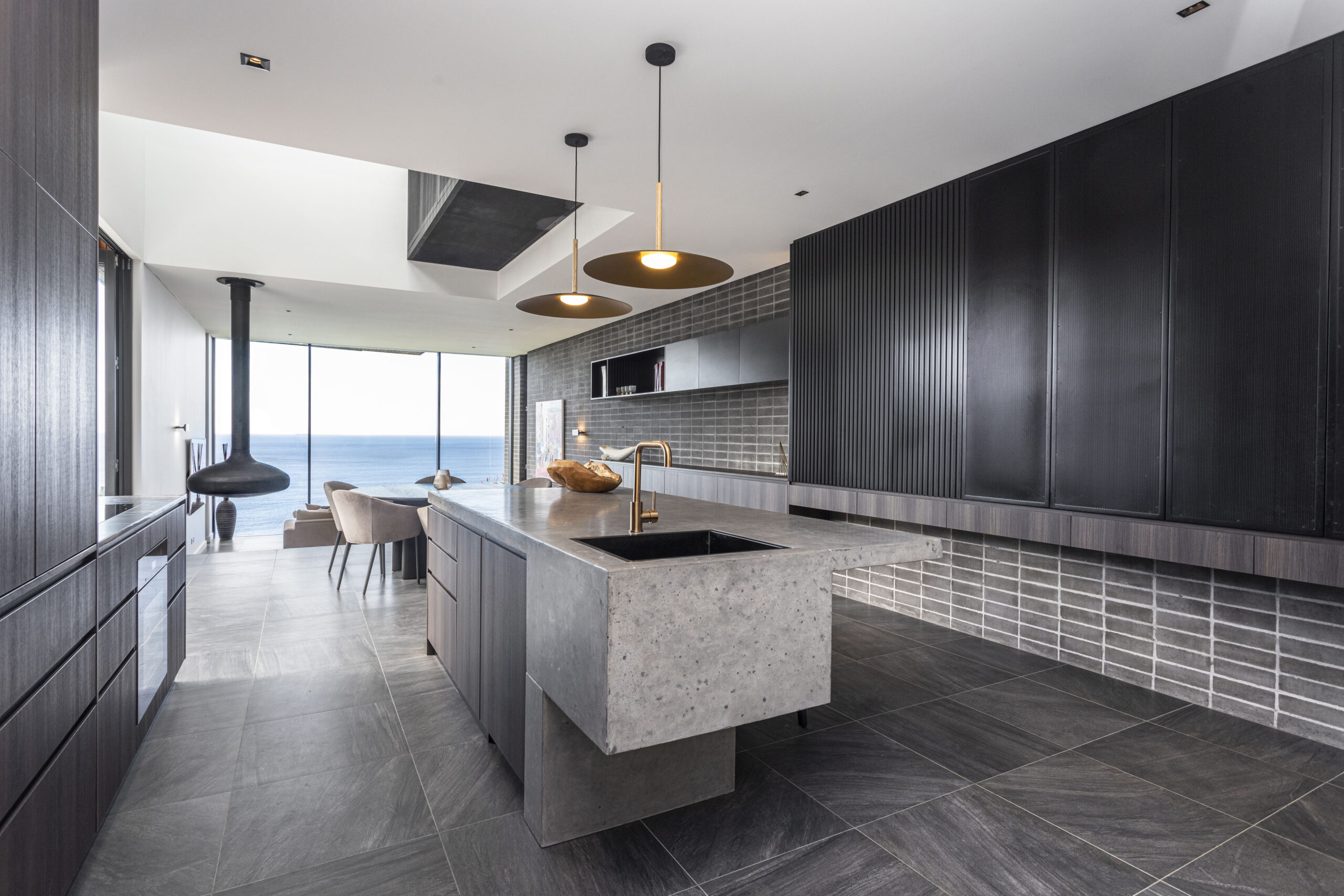
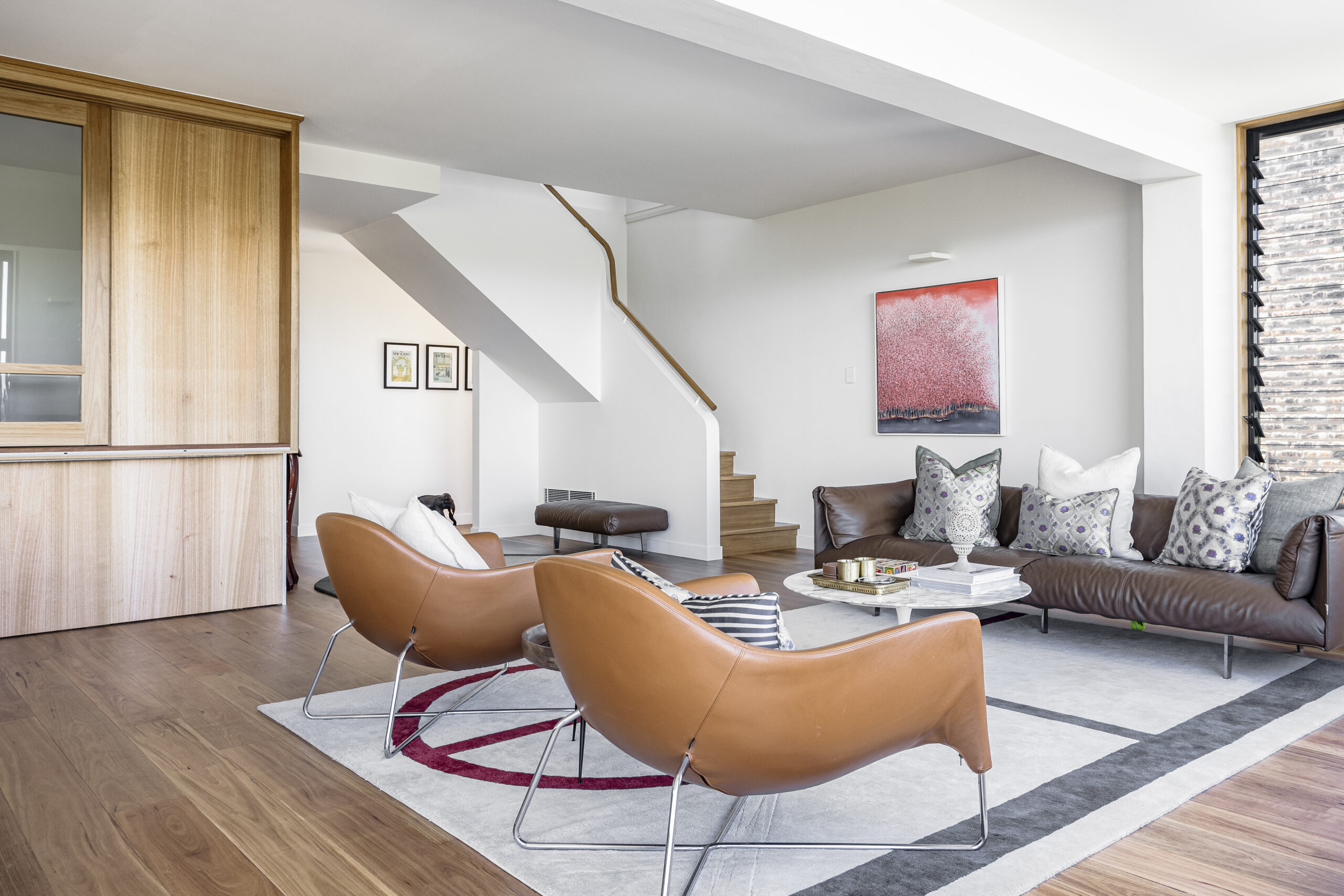
IN: Subtle, Layered Detailing
OUT: Oversized “Statement” Features
Not every feature needs to shout to be noticed. The move away from large-scale ‘statement’ elements – like bold walls or sculptural lights – is giving way to spaces that feel cohesive, curated and calm.
Instead, consider architectural lighting, integrated joinery, curated material layering, and fine craftsmanship that becomes more rewarding the closer you look.
In Vaucluse, layered detailing – like soft lighting, gentle transitions, and hand-finished surfaces – creates visual interest without visual noise.
2025 interiors will favour texture and depth through subtlety – offering timelessness and liveability.
IN: Coastal-Inspired, Not Coastal-Themed
OUT: Hamptons-by-Numbers
The Hamptons look has become so heavily replicated, it’s lost its impact. Today’s coastal homes are less about styling, and more about feeling – light, flow, and natural texture, anchored in local context.
Instead, consider filtered sunlight, softened transitions between indoors and out, sandy tones and finishes that reflect the surrounding landscape.
Our Cronulla project doesn’t copy coastal trends – it interprets them. From the organic material palette to the open yet private layout, it feels both grounded and effortless.
2025 coastal design is less about nautical clichés, and more about authenticity and sustainability.
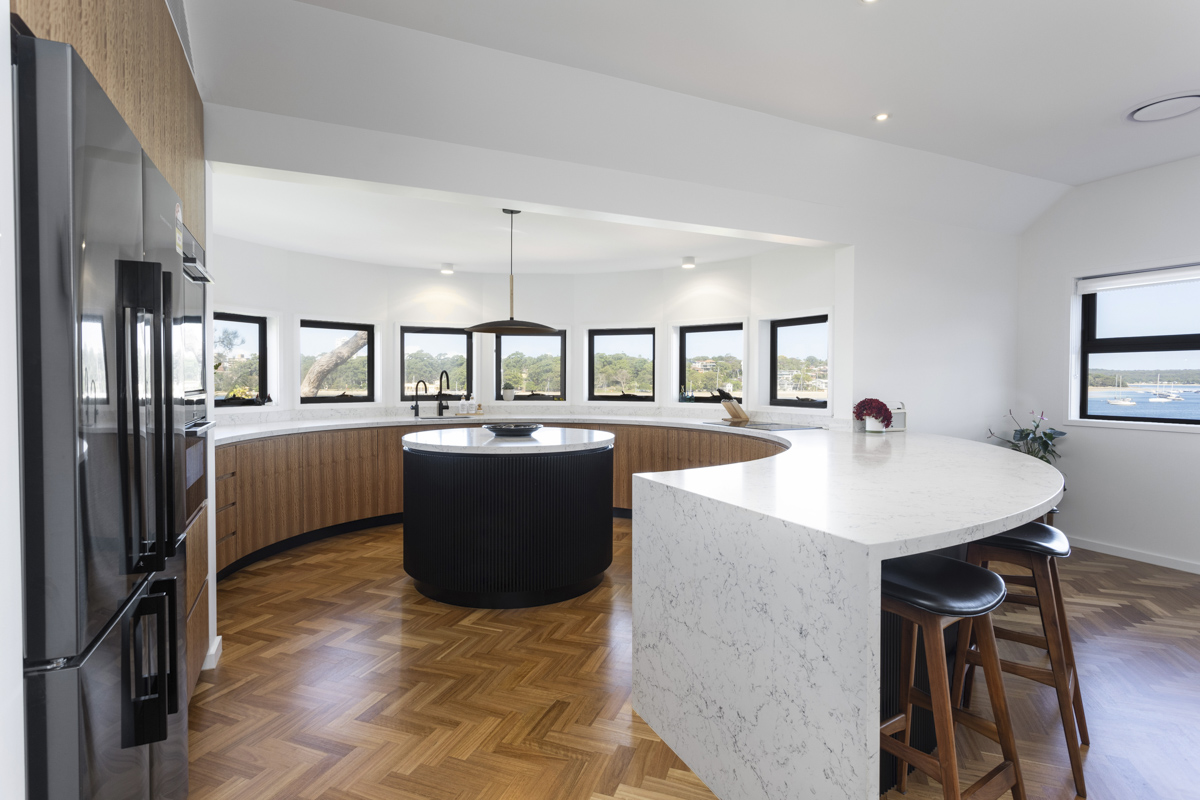

IN: Passive Design with Purpose
OUT: Tick-the-Box Sustainability
Sustainability in design is evolving beyond the mere inclusion of energy-efficient appliances. In 2025, there’s a growing emphasis on passive design strategies that are integrated into the very fabric of the building, enhancing comfort and reducing energy consumption.
Instead, consider orientation, insulation, natural airflow, and strategic shading. Building sustainability from the ground up ensures long-term efficiency and comfort.
In the Scarborough project, the floorplan, materials, and openings are all tuned to the coastal climate – reducing heat load and reliance on mechanical systems.
Industry leaders believe that passive design strategies – such as optimal orientation, thermal mass, and natural shading – are becoming standard features to reduce energy reliance.
IN: Homes That Evolve With You
OUT: Design That Stops at Handover
The final and perhaps most important shift? Clients are thinking long-term. Not just about how the home looks on handover day – but how it will live in 10, 15 or 20 years’ time.
Instead, consider adaptable layouts, thoughtful zones, materials that mature beautifully, and homes that age with grace.
Our portfolio focus is on homes that aren’t just ready for now, but for the future lives of their owners.
As confirmed by the James Hardie Forecast, forever homes and adaptable architecture are rising in demand.

Final Thoughts: Thoughtful Design is Always In
At TASS, we don’t design for trends. We design for people – for stories, surroundings, and the lives that unfold within each home. A home that feels like you now, and still does in 20 years, is the most enduring trend of all.
Starting a new project? Let’s talk about building a home that goes beyond trend – and into timeless.


